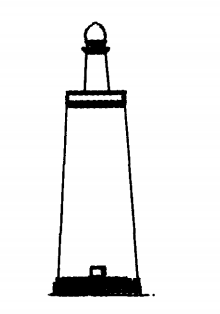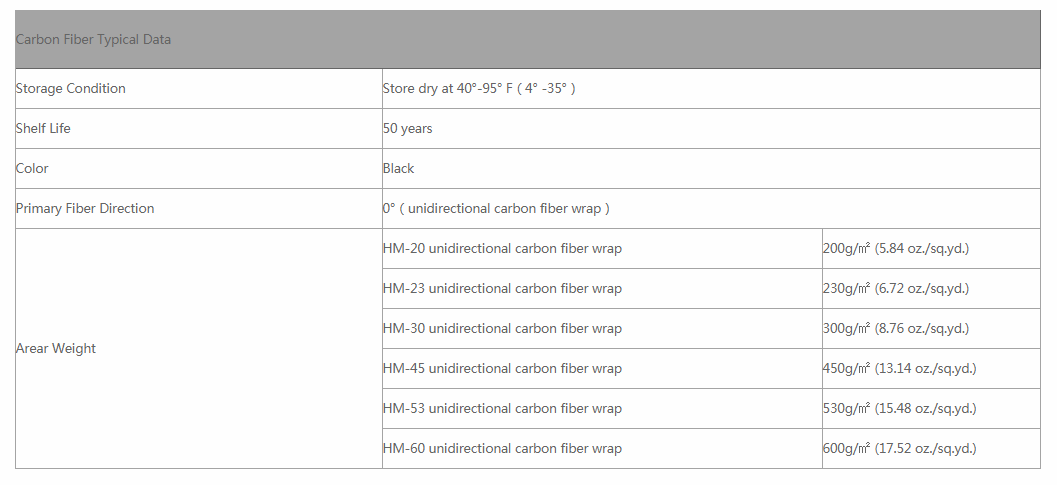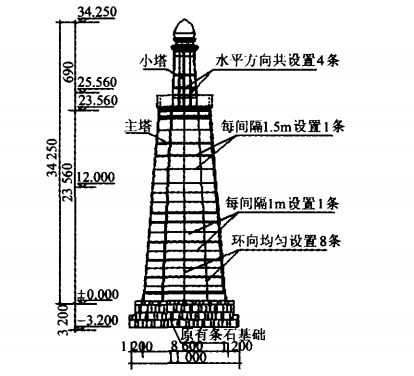Anti-seismic reinforcement of ancient towers
carbon fiber reinforcement
Anti-seismic reinforcement of ancient towers and carbon fiber reinforcement
Introduction of the project
An ancient pagoda was built in the first year of Zhenguan in the Tang Dynasty and has been more than 1,300 years ago. It is a typical Arabic-style building with extremely high cultural relic value.
The main structure of the ancient tower consists of a main tower and a small tower, with a total height of 34.246m, of which the main tower is 23.634m high and the small tower is 10.612m high. The main tower consists of an outer cylinder and an inner cylinder, the outer diameter is 8.53m, and the inner diameter is 6.05m.

At present, the ancient pagoda mainly has the following problems:
1) The main tower and the small tower have different degrees of inclination and different directions. The wall of the tower body is partially convex, the platform at the top of the main tower is slanted, and the core part and the outer wall part sink unevenly.
2) There are obvious cracks in the outer wall of the main tower. Including vertical cracks, horizontal cracks and through-seams at the corners of the windows, the outer surface of the tower is peeled off and the spire is severely damaged, indicating that the ancient tower has a problem of insufficient local bearing capacity.
3) The deformation of the main tower and the small tower is inconsistent, and the small tower is affected by the “whiplash effect”, which further aggravates the danger of the small tower collapsing under the influence of hurricanes and earthquakes.
Comparison and selection of reinforcement options
According to the actual engineering situation, generally available reinforcement methods include enlarged cross-section reinforcement method, outsourcing steel reinforcement method, pre-stress method and other traditional reinforcement reinforcement methods and carbon fiber reinforcement methods. The traditional method of strengthening the structure will increase the volume and weight of the structure, and the process is numerous, the construction period is long, the use of machinery is large, and the required construction site and construction space are large. The carbon fiber cloth reinforcement method has high strength, soft material, easy to paste, and convenient construction. It does not require large mechanical equipment and other fixing measures. After the reinforcement is completed, the structural weight increase is almost negligible, and it has high fatigue strength, durability and good corrosion resistance, can complete the reinforcement work in a short time.
Through comparison, the carbon fiber reinforcement method was selected to reinforce the ancient tower building.
Carbon fiber reinforced


Since the ancient pagoda is divided into two parts, the main pagoda and the small pagoda, they need to be considered separately when strengthening. First, epoxy resin mortar was used to grout the surface of the ancient pagoda. Then stick a 300mm wide circular carbon fiber sheet from the bottom of the main tower to the main tower from the bottom of the main tower at intervals of 1m (center distance), and stick it to 12m. Next, paste a 300mm wide circular carbon fiber sheet from the main tower at a distance of 12m to 1.5m (center distance), and stick it to the top of the main tower. In addition, on the main tower, a 300mm wide carbon fiber sheet is pasted vertically from the bottom of the tower to the top of the tower. Evenly spaced in the circumferential direction, a total of 8 longitudinal carbon fiber sheets.
The carbon fiber layout of the small tower is basically similar to that of the main tower. From the bottom of the small tower to the height of 2m from the small tower, paste a 250mnl wide carbon fiber sheet every 1m (center distance). Paste a 250mm wide circular carbon fiber sheet every 2m (center distance) from the 2m of the small tower, and stick it to the top of the small tower. Similarly, on the small tower, from the bottom of the tower to the top of the tower, a 250mml wide carbon fiber sheet is vertically affixed, evenly spaced in the circumferential direction, a total of 8 longitudinal carbon fiber sheets, the placement of which is the same as the longitudinal direction of the main tower. See Figure 5 for the ancient tower reinforcement scheme.
In conclusion
Compared with the pre-reinforcement method, the carbon fiber reinforcement method increased the bearing capacity of the reinforced ancient tower structure by about 20%, while the stiffness did not change much. It shows that the carbon fiber reinforcement method has little effect on the structural rigidity, and is more suitable for improving the seismic performance of ancient buildings than other reinforcement methods. In addition, the carbon fiber reinforcement method can also reduce the top displacement response, acceleration response, and bottom shear and overturning moment of the structure of the ancient tower structure, which has a significant effect on preventing the ancient tower structure from tilting and collapsing under earthquake action.
At the same time, the carbon fiber reinforcement can also guarantee the exterior architectural style of the original ancient tower to the greatest extent, especially in line with the “building old as old” reinforcement thinking of ancient buildings, and has a good application prospect in the field of ancient building reinforcement.